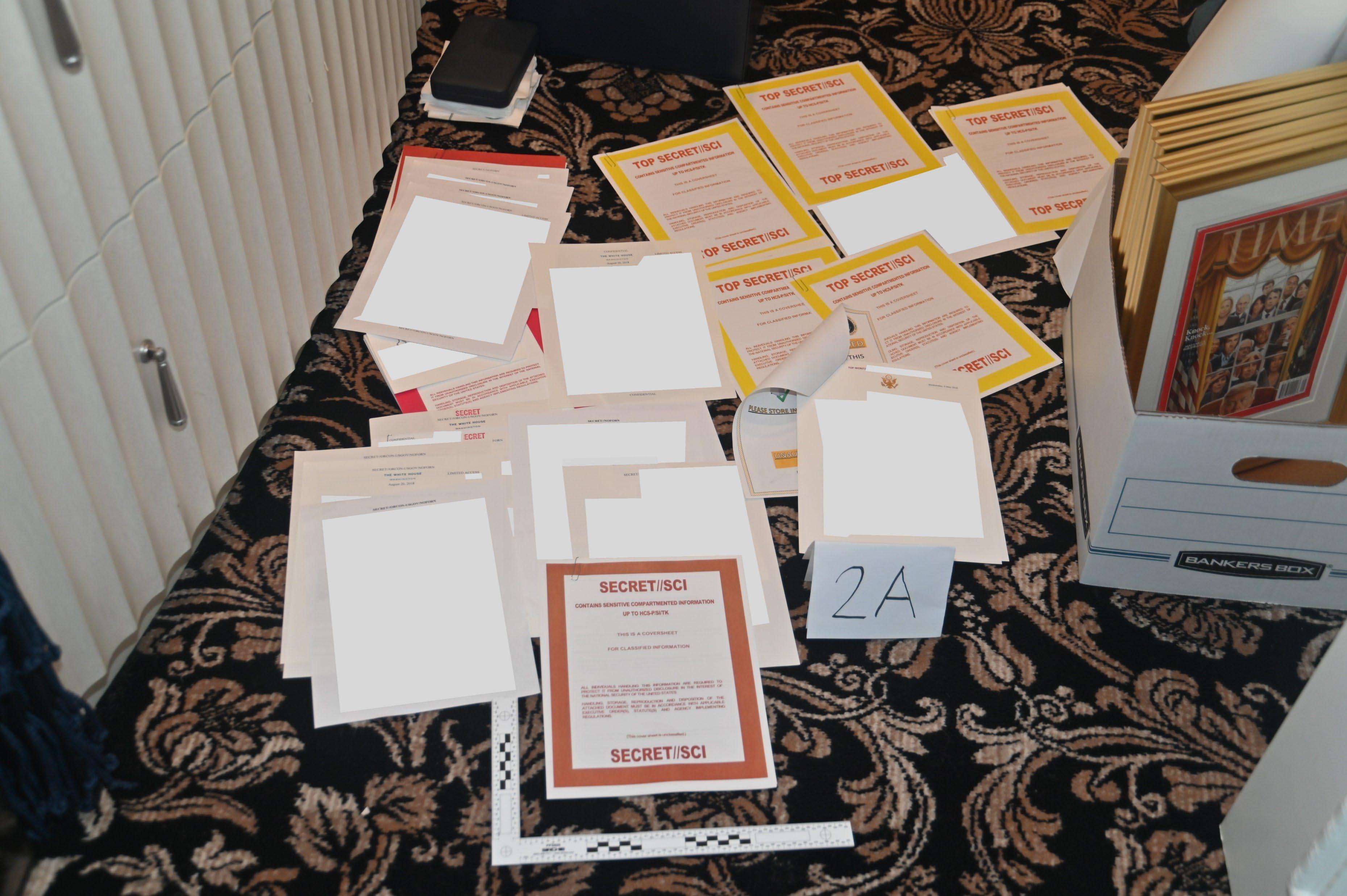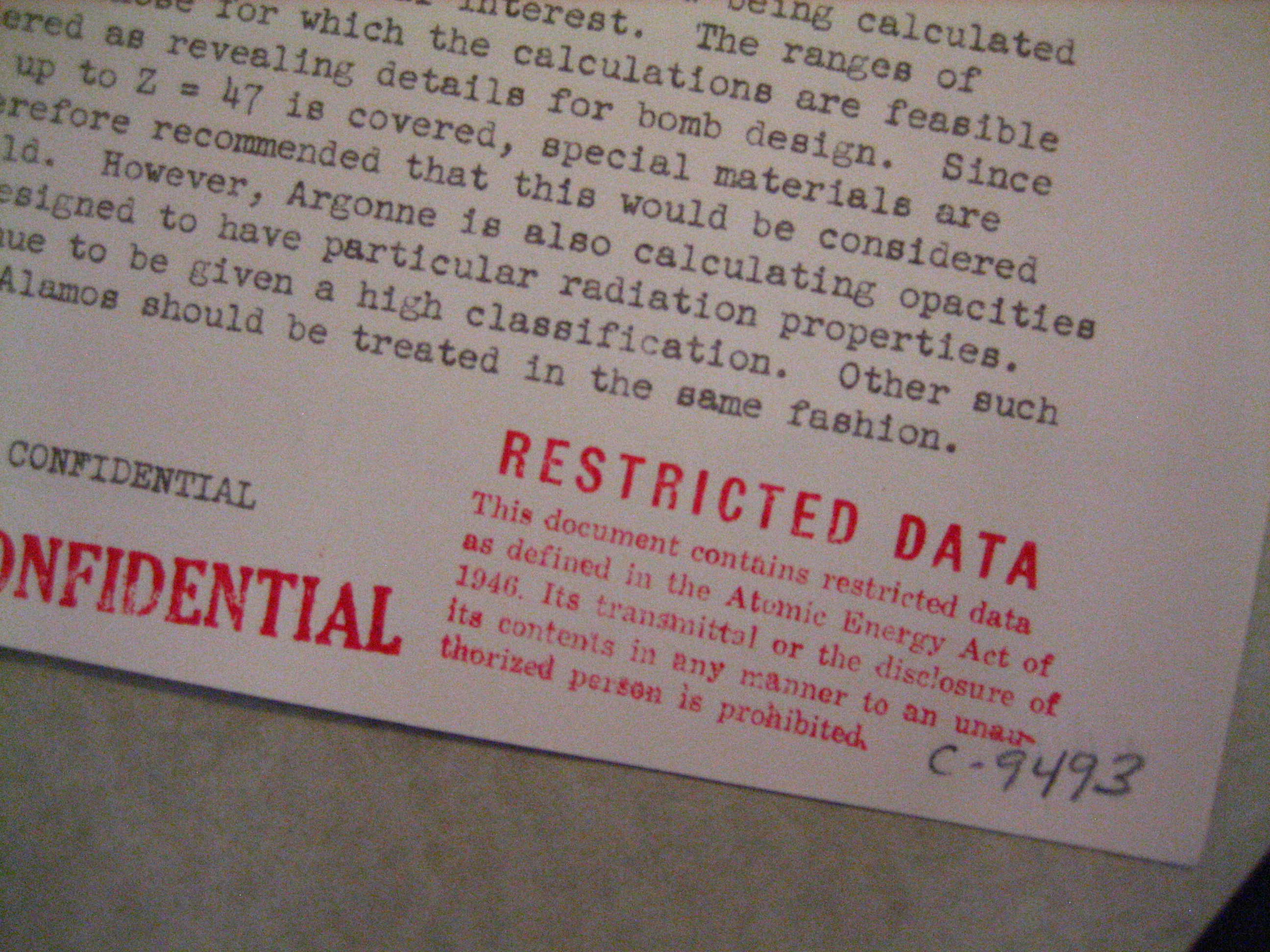|
CNWDI
Critical Nuclear Weapon Design Information (CNWDI, often pronounced ''SIN-widdy'' or ''SIN-wuh-dee'') is a U.S. Department of Defense (DoD) category of Top Secret Restricted Data or Secret Restricted Data that reveals the theory of operation or design of the components of a thermonuclear or fission bomb, warhead, demolition munition, or test device. Specifically excluded is information concerning arming, fuzing, and firing systems; limited life components; and total contained quantities of fissionable, fusionable, and high explosive materials by type. Among these excluded items are the components that DoD personnel set, maintain, operate, test or replace. The sensitivity of DoD CNWDI is such that access is granted to the absolute minimum number of employees who require it for the accomplishment of assigned responsibilities on a classified Classified may refer to: General *Classified information, material that a government body deems to be sensitive *Classified advertising or "c ... [...More Info...] [...Related Items...] OR: [Wikipedia] [Google] [Baidu] |
Classified Information In The United States
The United States government classification system is established under Executive Order 13526, the latest in a long series of executive orders on the topic of classified information beginning in 1951. Issued by President Barack Obama in 2009, Executive Order 13526 replaced earlier executive orders on the topic and modified the regulations codified to 32 C.F.R. 2001. It lays out the system of classification, declassification, and handling of national security information generated by the U.S. government and its employees and contractors, as well as information received from other governments. The desired degree of secrecy about such information is known as its sensitivity. Sensitivity is based upon a calculation of the damage to national security that the release of the information would cause. The United States has three levels of classification: Confidential, Secret, and Top Secret. Each level of classification indicates an increasing degree of sensitivity. Thus, if one holds ... [...More Info...] [...Related Items...] OR: [Wikipedia] [Google] [Baidu] |
Restricted Data
Restricted Data (RD) is a category of classified information in the United States that is defined by the Atomic Energy Act of 1954 as: :''all data concerning (1) design, manufacture, or utilization of atomic weapons; (2) the production of special nuclear material; or (3) the use of special nuclear material in the production of energy, but shall not include data declassified or removed from the Restricted Data category pursuant to section 142 f the Act''Atomic Energy Act of 1954 Chapter 2, Section 11(y). The fact that its legal definition includes "all data" except that already specifically declassified has been interpreted to mean that atomic energy information in the United States is [...More Info...] [...Related Items...] OR: [Wikipedia] [Google] [Baidu] |
Q Clearance
Q clearance or Q access authorization is the U.S. Department of Energy (DOE) security clearance required to access Top Secret Restricted Data, Formerly Restricted Data, and National Security Information, as well as Secret Restricted Data. Restricted Data (RD) is defined in the Atomic Energy Act of 1954 and covers nuclear weapons and related materials. The lower-level L clearance is sufficient for access to Secret Formerly Restricted Data (FRD) and National Security Information, as well as Confidential Restricted Data and Formerly Restricted Data. Access to Restricted Data is only granted on a need-to-know basis to personnel with appropriate clearances. A Q Clearance is equivalent to a U.S. Department of Defense Top Secret clearance. According to the Department of Energy, "Q access authorization corresponds to the background investigation and administrative determination similar to what is completed by other agencies for a Top Secret National Security Information access clearance ... [...More Info...] [...Related Items...] OR: [Wikipedia] [Google] [Baidu] |
United States Government Secrecy
The United States government classification system is established under Executive Order 13526, the latest in a long series of executive orders on the topic of classified information beginning in 1951. Issued by President Barack Obama in 2009, Executive Order 13526 replaced earlier executive orders on the topic and modified the regulations codified to 32 C.F.R. 2001. It lays out the system of classification, declassification, and handling of national security information generated by the U.S. government and its employees and contractors, as well as information received from other governments. The desired degree of secrecy about such information is known as its sensitivity. Sensitivity is based upon a calculation of the damage to national security that the release of the information would cause. The United States has three levels of classification: Confidential, Secret, and Top Secret. Each level of classification indicates an increasing degree of sensitivity. Thus, if one holds ... [...More Info...] [...Related Items...] OR: [Wikipedia] [Google] [Baidu] |
Classified Information
Classified information is confidential material that a government deems to be sensitive information which must be protected from unauthorized disclosure that requires special handling and dissemination controls. Access is restricted by law or regulation to particular groups of individuals with the necessary security clearance with a need to know. A formal security clearance is required to view or handle classified material. The clearance process requires a satisfactory background investigation. Documents and other information must be properly marked "by the author" with one of several (hierarchical) levels of sensitivity—e.g. Confidential (C), Secret (S), and Top Secret (S). All classified documents require designation markings on the technical file which is usually located either on the cover sheet, header and footer of page. The choice of level is based on an impact assessment; governments have their own criteria, including how to determine the classification of an inf ... [...More Info...] [...Related Items...] OR: [Wikipedia] [Google] [Baidu] |
Nuclear Weapon Design
Nuclear weapons design are physical, chemical, and engineering arrangements that cause the physics package of a nuclear weapon to detonate. There are three existing basic design types: # Pure fission weapons are the simplest, least technically demanding, were the first nuclear weapons built, and so far the only type ever used in warfare, by the United States on Empire of Japan, Japan in World War II. # Boosted fission weapons are fission weapons that use nuclear fusion reactions to generate high-energy neutrons that accelerate the fission chain reaction and increase its efficiency. Boosting can more than double the weapon's fission energy yield. # Staged thermonuclear weapons are arrangements of two or more "stages", most usually two, where the weapon derives a significant fraction of its energy from nuclear fusion (as well as, usually, nuclear fission), . The first stage is typically a boosted fission weapon (except for the earliest thermonuclear weapons, which used a pure fission ... [...More Info...] [...Related Items...] OR: [Wikipedia] [Google] [Baidu] |
Nuclear Weapon
A nuclear weapon is an explosive device that derives its destructive force from nuclear reactions, either fission (fission or atomic bomb) or a combination of fission and fusion reactions (thermonuclear weapon), producing a nuclear explosion. Both bomb types release large quantities of energy from relatively small amounts of matter. Nuclear bombs have had yields between 10 tons (the W54) and 50 megatons for the Tsar Bomba (see TNT equivalent). Yields in the low kilotons can devastate cities. A thermonuclear weapon weighing as little as can release energy equal to more than 1.2 megatons of TNT (5.0 PJ). Apart from the blast, effects of nuclear weapons include firestorms, extreme heat and ionizing radiation, radioactive nuclear fallout, an electromagnetic pulse, and a radar blackout. The first nuclear weapons were developed by the Allied Manhattan Project during World War II. Their production continues to require a large scientific and industrial complex, pr ... [...More Info...] [...Related Items...] OR: [Wikipedia] [Google] [Baidu] |
Nuclear Secrecy
Nuclear may refer to: Physics Relating to the nucleus of the atom: * Nuclear engineering * Nuclear physics * Nuclear power * Nuclear reactor * Nuclear weapon * Nuclear medicine *Radiation therapy *Nuclear warfare Mathematics * Nuclear space * Nuclear operator * Nuclear congruence * Nuclear C*-algebra Biology Relating to the nucleus of the cell: * Nuclear DNA Society * Nuclear family, a family consisting of a pair of adults and their children Music * "Nuclear" (band), chilean thrash metal band * "Nuclear" (Ryan Adams song), 2002 *"Nuclear", a song by Mike Oldfield from his '' Man on the Rocks'' album * ''Nu.Clear'' (EP) by South Korean girl group CLC Films * ''Nuclear'' (film), a 2022 documentary by Oliver Stone. See also * Nucleus (other) *Nucleolus * Nucleation *Nucleic acid Nucleic acids are large biomolecules that are crucial in all cells and viruses. They are composed of nucleotides, which are the monomer components: a pentose, 5-carbon sugar, a phosphate ... [...More Info...] [...Related Items...] OR: [Wikipedia] [Google] [Baidu] |




